Google Translate vs SayHi
July 29, 2023 | Author: Adam Levine
20
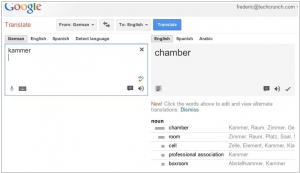
Google Translate is a free translation service that provides instant translations between dozens of different languages. It can translate words, sentences and web pages between any combination of our supported languages. With Google Translate, we hope to make information universally accessible and useful, regardless of the language in which it’s written.
2
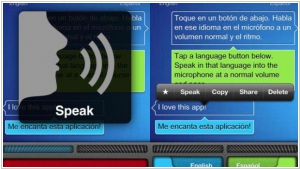
SayHi Translate is the interpreter in your pocket. Talk to your iPhone, iPod Touch, or iPad and hear your words back in different languages. Tap your language button, speak into the microphone, and your voice will be instantly translated. Have a conversation with anyone without needing to switch languages. You can also type anytime by simply pressing the keyboard buttons.
See also:
Top 10 Online Translators
Top 10 Online Translators
Google Translate and SayHi are both translation apps that allow users to translate text and speech between different languages. However, there are some main differences between the two:
Features and Functionality: Google Translate is a more comprehensive translation app with a wide range of features and functionalities. It supports translation for text, speech, images, handwriting, and even real-time translation using the camera. It also offers additional features such as offline translation, language detection, and phrasebook. SayHi, on the other hand, focuses primarily on speech translation, allowing users to speak or type a sentence and translate it into different languages.
Language Support: Google Translate supports a large number of languages, including over 100 languages for text translation and over 50 languages for speech translation. It also offers language detection, which can automatically detect the language of the input text or speech. SayHi, on the other hand, supports a more limited number of languages for speech translation, although the exact number may vary depending on the version and edition of the app.
User Interface and Ease of Use: Google Translate has a user-friendly interface with a simple and intuitive design. It offers a wide range of input options and translation features, which may make it suitable for both casual and advanced users. SayHi also has a straightforward user interface, but it focuses primarily on speech translation, which may make it more suitable for users who prefer speech-based translation.
Offline Translation: Google Translate offers offline translation for a select number of languages, allowing users to use the app without an internet connection. SayHi, on the other hand, typically requires an internet connection to function, as it relies on online speech recognition and translation services.
Platform and Availability: Google Translate is available as a web-based service and also as a standalone app for both Android and iOS devices. It is widely used and available in many countries around the world. SayHi is also available as a standalone app for both Android and iOS devices, but its availability and usage may vary depending on the specific version and edition of the app.
In summary, the main differences between Google Translate and SayHi include their features and functionality, language support, user interface and ease of use, offline translation capability, and platform availability. Users should consider their specific translation needs and preferences when choosing between the two apps.
See also: Top 10 Online Translators
Features and Functionality: Google Translate is a more comprehensive translation app with a wide range of features and functionalities. It supports translation for text, speech, images, handwriting, and even real-time translation using the camera. It also offers additional features such as offline translation, language detection, and phrasebook. SayHi, on the other hand, focuses primarily on speech translation, allowing users to speak or type a sentence and translate it into different languages.
Language Support: Google Translate supports a large number of languages, including over 100 languages for text translation and over 50 languages for speech translation. It also offers language detection, which can automatically detect the language of the input text or speech. SayHi, on the other hand, supports a more limited number of languages for speech translation, although the exact number may vary depending on the version and edition of the app.
User Interface and Ease of Use: Google Translate has a user-friendly interface with a simple and intuitive design. It offers a wide range of input options and translation features, which may make it suitable for both casual and advanced users. SayHi also has a straightforward user interface, but it focuses primarily on speech translation, which may make it more suitable for users who prefer speech-based translation.
Offline Translation: Google Translate offers offline translation for a select number of languages, allowing users to use the app without an internet connection. SayHi, on the other hand, typically requires an internet connection to function, as it relies on online speech recognition and translation services.
Platform and Availability: Google Translate is available as a web-based service and also as a standalone app for both Android and iOS devices. It is widely used and available in many countries around the world. SayHi is also available as a standalone app for both Android and iOS devices, but its availability and usage may vary depending on the specific version and edition of the app.
In summary, the main differences between Google Translate and SayHi include their features and functionality, language support, user interface and ease of use, offline translation capability, and platform availability. Users should consider their specific translation needs and preferences when choosing between the two apps.
See also: Top 10 Online Translators
Google Translate vs SayHi in our news:
2016. Google Translate gets in-app translations on Android, offline mode on iOS
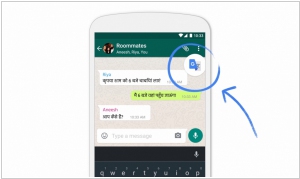
Google has introduced an update to its Translate applications for both iOS and Android devices. This latest version brings offline support to the iOS platform, a feature that has already been available on Android. Offline support proves to be particularly useful when traveling, as it eliminates concerns about a reliable internet connection. The Google team has focused on optimizing language package downloads, reducing their size by up to 90 percent. These packages now weigh approximately 25 MB and are accessible in 52 different languages. For Android users, the key addition is the Tap to Translate feature. Instead of the traditional method of copying and pasting text from apps into Translate, users can now simply copy the text, and the translation option will automatically appear. The translated content is displayed as an overlay without the need to switch between various applications.
2015. Google Translate app adds 20 more languages
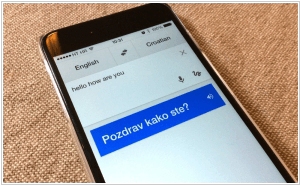
Google is expanding the capabilities of its Translate app to encompass more than twenty-five additional languages. Users will now have the ability to translate to and from English with languages such as Bulgarian, Catalan, Croatian, Czech, Danish, Dutch, Filipino, Finnish, Hungarian, Indonesian, Lithuanian, Norwegian, Polish, Romanian, Slovak, Swedish, Turkish, and Ukrainian. While Google already provides a translation feature through its website search results and directly within its Chrome browser, the demand for portable, on-the-go translation is evident. The Google Translate app offers three methods for translating text: typing the desired text, speaking the text, or using the mobile device's camera to capture and automatically translate text from signs, books, or other objects. Importantly, the visual translation feature can be used offline, eliminating the need for an internet connection.
2015. Google Translate now does real-time voice and written text translation
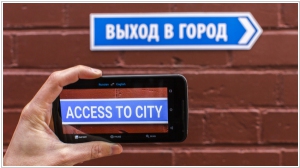
The mobile app for Google Translate on Android and iOS has received an impressive update, enhancing its capabilities even further. The latest update introduces two remarkable features: real-time voice translation and sign translation. While the app has previously offered image-based translation, these new features provide instant translation with zero delay, and the best part is that they work offline, making it incredibly useful for frequent travelers. To translate a sign, you simply need to point your camera at it, ensuring it is captured completely, and the app will promptly provide the translation. The real-time voice translation feature is equally impressive, acting as an intermediary for conversations between individuals speaking different languages. By tapping the in-app microphone once and initiating the conversation in the foreign language, the app recognizes the language and allows both parties to communicate. As the conversation progresses, the app continuously generates text-based translations in real-time, effectively breaking down language barriers.
2009. Google Translate now translates in real time
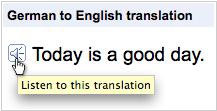
In the near future, the advancement of text and speech translation technology will become increasingly crucial for the virtual economy. Language acts as a significant barrier that hinders collaboration among talented individuals from different countries on shared projects. Therefore, we hold high hopes for Google Translate as an innovative service that breaks down this barrier. Today, Google has released a new version of the service, introducing several useful features. Firstly, the service now provides real-time translation results as you type. Secondly, when translating from any language into English, you can listen to the translated text, allowing for the practice of pronunciation. Furthermore, a Romanization feature has been added. For instance, when translating into Chinese, the translation can be read in Roman letters. Another noteworthy feature is the automatic language detection for the original text. Additionally, when you need to translate a web page, you can simply enter its URL into the text entry field.



